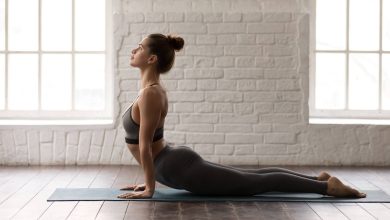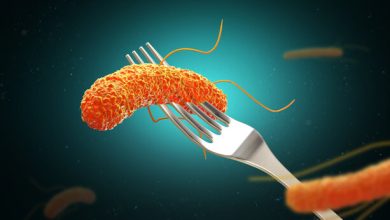Why You Need an N-95 Mask to Fight Omicron?

N-95 Mask: Coronavirus is a contagious disease caused by the SARS-CoV-2 virus. While Covid-19 has many newer variants coming in, the alarming Omicron variant is the most infectious – far more transmissible than the Delta variant that drove the second wave of Covid-19 in 2021.
Ever since the first case of the Omicron variant got detected in South Africa, the virus began spreading like wildfire across the globe. To limit the curb of the virus, we need to maintain social distance, maintain good hand hygiene and most importantly, wear a mask.
Along with good sanitization practice, masking up aids in keeping yourself away from the virus. However, to limit the spread of highly infectious Omicron, you need to wear a good-quality mask and wear it right!
Why Wearing a Mask is Critical to Prevent Infection?
When a COVID-19-infected person comes into contact with an uninfected person, the virus can get transmitted as part of the infected person’s respired particles and droplets, which are consequently ingested by that of an uninfected person. This happens because when we breathe, sing, speak, sneeze, or cough, we all release particles and microscopic droplets.
When an infected or sick person is wearing a good quality mask, the threat to those around them gets downsized. When an uninfected individual wears a mask, the total amount of particles they inhale gets lowered, reducing their chance of infection from the infected person. Particulate air pollution can also be reduced with the use of masks.
Indoor settings where you share space with other people, such as the office, hospitals or doctor’s offices, wedding venues, stores, classrooms, and places of worship, require you to wear a mask. While outside, ensure you wear a mask everywhere, especially in crowded outdoor areas like the market or the mall, and when travelling through bus, cab, airline, or train.
Different Types of Mask to Protect from Covid-19:
Most of us have worn masks of different types over the last two years, including cloth masks, surgical or medical masks, and high-filtration masks with various labels like N95, KN95, KF94, and FFP2. So, how are these masks different from each other and which one can be considered sufficient to fight the Omicron.
Cloth Masks:
Cloth masks get made using cotton or synthetic cloth fabrics. A cloth mask captures respiratory droplets expelled by the person wearing the mask when they talk, cough, or sneeze. It also acts as a shield that deters the wearer from breathing droplets released by others. A cloth mask reduces larger droplets from an infected person’s nose and mouth, but it provides little protection to the uninfected wearer because the material does not filter small particles satisfactorily.
Surgical/Medical Masks:
Generally, a surgical mask is made of good three-ply filtering material, but it is not devised to seal the face adequately. It sets up massive gaps between the edges of the mask and the face, thus enabling virus-carrying particles to be exhaled or inhaled. Double-masking, or wearing a cloth mask that fits perfectly on your face over a surgical mask to reduce gaps, is one good way to improve the fit of a surgical mask.
High-Filtration Masks:
Masks built to the American N95 standard or similar global standards (European FFP2, Chinese KN95, and Korean KF94) are the best masks one can use. When properly fitted, they filter out at least 95 per cent of particles (N95, KN95) or 94 per cent of particles (FFP2, KF94). It is best to avoid masks with valves because they do not filter exhaled air, which is crucial when the wearer is infected unknowingly.
Why Should you go for a High-Filtration Mask like N-95?
Cloth masks do not filter aerosols, and aerosols are particles that lead to the spread of the coronavirus. If two people have worn cloth masks, then aerosols can freely flee from an infected person and be smoothly inhaled by the other person. With Omicron assessed to be 2.7 to 3.7 times more infectious than the Delta variant, cloth masks are not going to be a safer bet.
In essence, N-95 masks are the best option for you to ensure protection from the Omicron variant of Covid-19. Because of the structure of the filter and the electrostatic charge that tricks and traps the tiny aerosol particles, N95 high-filtration masks are much better at blocking these particles.
The fit of the filter of an N-95 on the wearer’s mouth and nose are way better than the fit of a cloth mask. A cloth mask tends to leave massive gaps on the sides of the face, thus allowing particles a chance to escape. Properly worn N-95 masks offer higher protection than cloth or surgical masks.
Healthcare workers and vulnerable sections of individuals who have a heart ailment, diabetes or are aged should use N-95 masks to minimize the risk of exposure to the virus.
For ensuring extra protection, everyone must apply a no-alcohol face shield gel by RxSAFE before wearing the N-95 mask. It is a NABL lab certified face shield gel that kills 99.9% of germs, viruses and bacteria, protects against Mucormycosis and moisturizes the face.
Wearing a Good-Fitted N-95 Mask is a Must – Here’s Why!
You must ensure that the mask fits properly on your face. An N95 mask is typically fit-tested in occupational health settings. The most common type of mask failure is a loose or ill-fitting mask that allows virus-carrying particles to escape outwards (for an infected person) and get inwards (for the uninfected person). Repeated use of cloth and surgical masks causes them to become loose and ill-fitting.
Tips to Wear an N-95 Mask Perfectly:
- Ensure that the mask covers your mouth and nose nicely.
- Mask should fit at the edges in a protected manner so that the air you breathe in and out of the mask passes only through the filter.
- The mask should be reshaped to the nose bridge; generally, a plastic or metal clip is formed into the mask for this purpose.
- The simplest test is to blow air outwards while wearing the mask.
- If you feel the air on your face outside the mask’s edges, make sure you press that edge inward.
- To ensure that the mask fits comfortably against your face, use the headbands or ear loops.
Can You Reuse an N-95 Mask?
Yes, you can reuse an N-95 mask, but with little care. Since N-95 masks are created to wear at locations like a construction site, they have the capacity to filter out excess dust. You can use the N-95 mask in non-dusty areas and reuse it after a few days after the mask dries.
Wearing a high-filtration mask for a day, storing it in a dust-free, dry environment for 2-3 days, and then reusing it is a good routine. Use a new mask if the band or ear loop breaks or any part of the mask no longer seals properly.
Wearing a good mask, maintaining social distance and getting fully vaccinated are the most essential and simplest efforts you can make to curb the pandemic and battle the Omicron variant. Ensure you upgrade to a high-filtration mask, wear it properly and stay safe. In case of unavailability of a high-filtration mask – make sure you double mask – using a cloth mask and a surgical mask.



